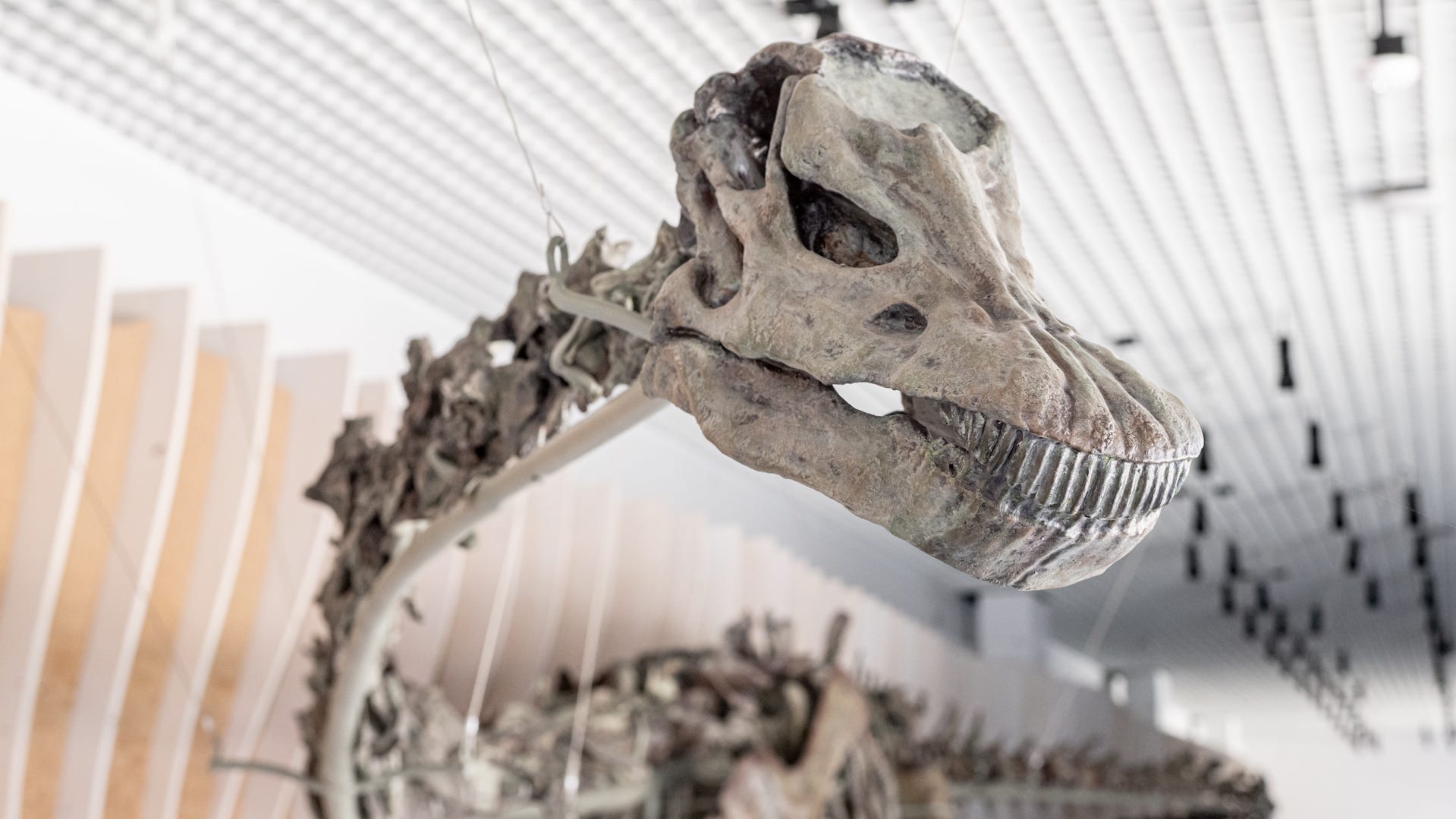
The video shows a large dinosaur with identical green bones
The 150-million-year-old bones discovered in Utah will go on display at the Natural History Museum in Los Angeles later this year.
More than 3,700 miles away on opposite sides of the Atlantic Ocean, researchers have discovered footprints left by dinosaurs that roamed from Africa to South America when the continents merged into a supercontinent.
More than 260 footprints located in Brazil and Cameroon are believed to be part of it. Early Cretaceous PeriodThat’s according to a study released Monday by the New Mexico Museum of Natural History and Science.
These tracks were originally formed 621 miles above a thin layer of sandstone and mud on the former supercontinent Gondwanan, which later split off to form the South Atlantic Ocean.
The study shared photographs of footprints with similar patterns that appeared to be from similar ages and geographic contexts, according to Southern Methodist University paleontologist and lead study author Lewis L. Jacobs found.
“One of the youngest and Short geographic links between Africa and South America “The elbow of northeastern Brazil lies against what is now the coast of Cameroon in the Gulf of Guinea,” Jacobs said in an SMU news release. “The two continents were continuous in that short stretch, so there were animals on either side of that connection that could pass through.”
Footprints left by three-legged theropods
The study found that most of the fossilized footprints were made by theropod dinosaurs, characterized by their three toes and hollow bones. Some other fossils may have been made by sauropods or ornithischians.
According to the study, paleontologists calculated waist height, speed range and body mass for each track type to conclude that the species were similar.
The location of the footprints in Brazil’s Porborema region and Cameroon’s Goom Basin allowed researchers to pinpoint where rifts formed as tectonic plates moved in the Earth’s crust, the study said.
Along with the footprints, the researchers also found quasi-graben basins, geological structures formed when the Earth’s crust breaks apart. River and lake sediments have been found in basins containing fossilized pollens that are 120 million years old.
What is Gondwana?
Gondwana is a former supercontinent that separated from the landmass of Pangea about 180 million years ago. This includes South America, Africa, Australia and Antarctica.
About 140 million years ago, Africa and South America began to separate, creating rifts along pre-existing weaknesses and the South Atlantic Ocean filling the space between the two newly formed continents.